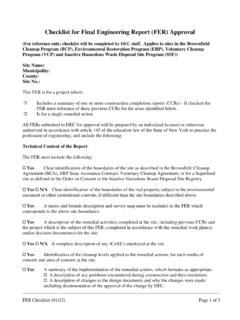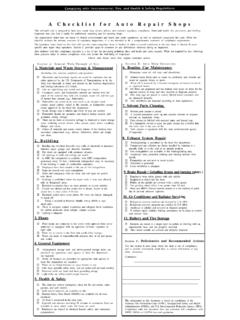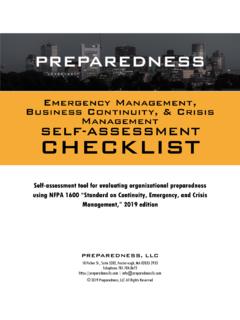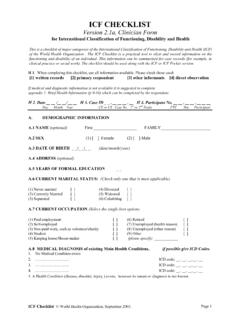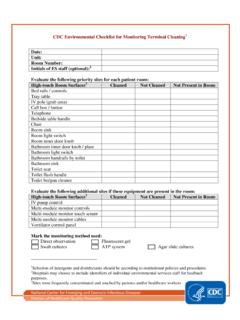Transcription of Checklist: Dialysis Station Routine Disinfection
1 checklist : Dialysis Station Routine Disinfection This list can b e used if t here is no visible soil on surfaces at t he Dialysis Station . If visible blood or other soil is present, surfaces must be cleaned p rior to Disinfection .
2 The proper steps for cleaning and d isinfecting surfaces that h ave visible soil on t hem are not d escribed h erein. Additional or different st eps might be warranted in an o utbreak situation. Consider gathering necessary supplies1 prior to Part A . Part A: Before Be ginning Routine D isinfection of the D ialysis St ation Disconnect and takedown used blood tubing and dialyzer from the Dialysis machine. Discard tubing and dialyzers in a leak-proof container2.
3 Check that there is no visible soil or blood on surfaces. Ensure that the priming bucket has been emptied3 .Ensure that the patient has left the Dialysis station4 .Discard all single-use supplies. Move any reusable supplies to an area where they will be cleaned and disinfected before being stored or returned to a Dialysis station5 .Remove gloves and perform hand hygiene. PART B: Routine D isinfection of the D ialysis St ation AFTER patient has l eft Station Wear clean gloves. Apply disinfectant6 to all surfaces7 in the Dialysis Station using a wiping motion (with friction).
4 Ensure surfaces are visibly wet with disinfectant. Allow surfaces to air-dry8 . Disinfect all surfaces of the emptied priming bucket3. Allow the bucket to air-drybefore reconnection or used or potentially contaminated items away from the disinfected gloves and perform hand hygiene. Do not bring patient or clean supplies to Station until these steps have been completed. Important
5 Notes: 1 Necessary supplies may include, but are not limited to: leak-proof disposal containers, gloves and other appropriate personal protective equipment (PPE), properly diluted Environmental Protection Agency (EPA)-registered hospital disinfectant, and wipes/clothes. 2 If used dialyzers and blood tubing are transported out of the Station before being discarded, they should be transported in a manner that prevents any leakage. 3 Perform this step if machine is equipped with a bucket for prime waste. If waste-handling option (WHO) ports are used, separate steps for Disinfection are required and are not described here (follow manufacturer s instructions).
6 4 Patients should not be removed from the Station until they have completed treatment and are clinically stable. If a patient cannot be moved safely, Routine Disinfection of the Dialysis Station should be delayed until the Station can be vacated in a safe manner. If patients are moved to a separate seating area prior to removing cannulation needles or while trying to achieve hemostasis, the chairs and armrests in those areas must be disinfected in between patients. 5 Disposal/removal of used supplies may occur before and/or after the patient has departed the Station .
7 6 Follow the manufacturer s label instructions for proper dilution, preparation, and use of the disinfectant. 7 Surfaces to disinfect include but are not necessarily limited to: all surfaces in contact with the patient ( , Dialysis chair, tray tables, blood pressure cuffs) and frequently contacted by healthcare personnel ( , control panel; top, front and sides of Dialysis machine; touchscreens; countertops; computer keyboards). 8 Air-drying is recommended to allow for sufficient contact time with the disinfecting agent.











